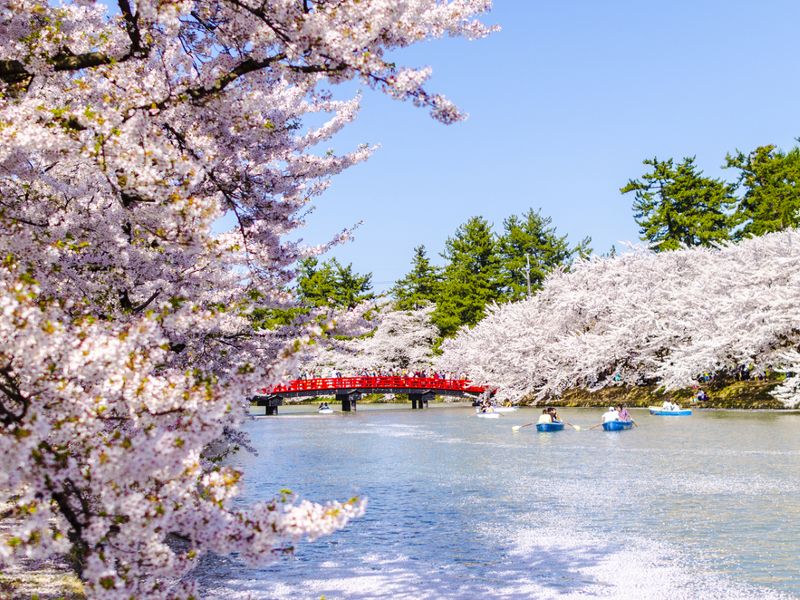Japan is famous for its flowering cherry trees. These trees are much sought after around the world. Cherry blossom festivals are held in such diverse regions as Washington, Vancouver, Paris, Stockholm, and Spain’s Jerte Valley. Still, Japan remains the premier location in the world for viewing the cherry blossoms or attending a cherry blossom festival, especially when seeing Japan by train.
During the peak of the blooming season, the Japanese people and tourists alike attend festivals and engage in hanami, or picnics beneath the cherry trees.
Japanese cherry blossom symbolism
The cherry blossom, called the sakura, is steeped in tradition and meaning. It shares the title of Japan’s national flower, appears on Japanese coins, and is the subject of many Japanese folk songs, such as “Sakura, Sakura.” Japanese cherry blossom meaning involves Buddhist religious influence and can be considered a metaphor for the ephemerality, or brevity and mortality, of life, along with life’s beauty.
Cherry blossoms are also associated with clouds due to their fluffy, cloudlike appearance when in full bloom.
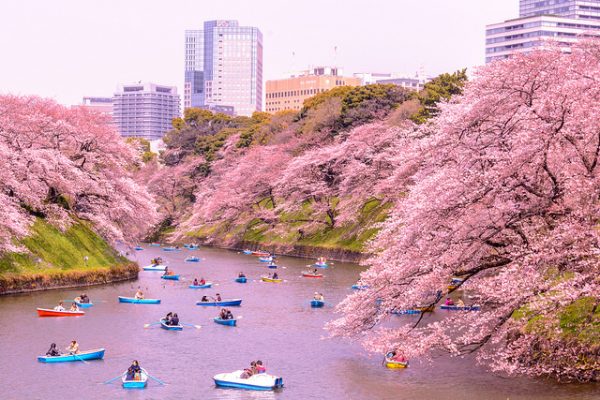
Differences between sakura and ume
The sakura may at times be confused with the ume or Japanese plum tree. Plum blossom spots in Japan tend to bloom earlier in the season – from mid-February to mid-March – while the cherry blossom season peaks in April. Both trees produce flowers ranging in color from white to pink, to red but can be easily identified in the following steps:
- Cherry flowers have a small split or notch in each petal; plums do not.
- Cherry blossoms produce multiple flowers per bud, while plums produce only one.
- New cherry leaves are green in color, while plum tree leaves emerge with a purple or red hue.
Hirosaki Castle Park (Hirosaki)
Home to 2,600 flowering cherry trees, Hirosaki Park is considered one of the best cherry blossom viewing locations in the country. More than a million visitors flood its gates each spring.
The four-hundred-year-old Hirosaki Castle also adds to the uniqueness of this location. Visitors can rent boats and float amid fallen blossoms in the castle’s moat. Hirosaki Park is only a short bus ride from JR Lines Hirosaki Station.
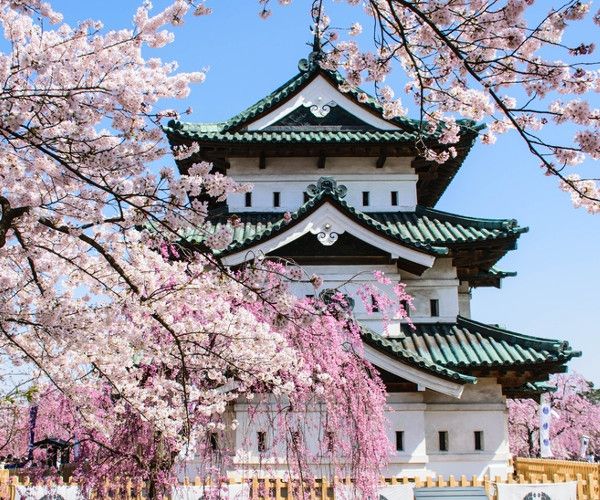
[banner-en]
Shinjuku Gyoen (Tokyo)
This park features lush lawns and over a thousand cherry trees. The area is unique in that it is home to both late and early blooming trees. This makes it a prime spot for visitors who arrive a week too early or too late for the main sakura-matsuri festival.
Located in the heart of the city, Tokyo’s high-rise buildings provide a startling contrast to the park’s peaceful natural surroundings. Shinjuku Gyoen is a mere ten-minute walk from Shinjuku Station, one of the central Tokyo train stops, part of the circular Yamanote line. Japan Rail Pass holders can ride all Yamanote line trains with no limits, during the duration of their JR Pass.
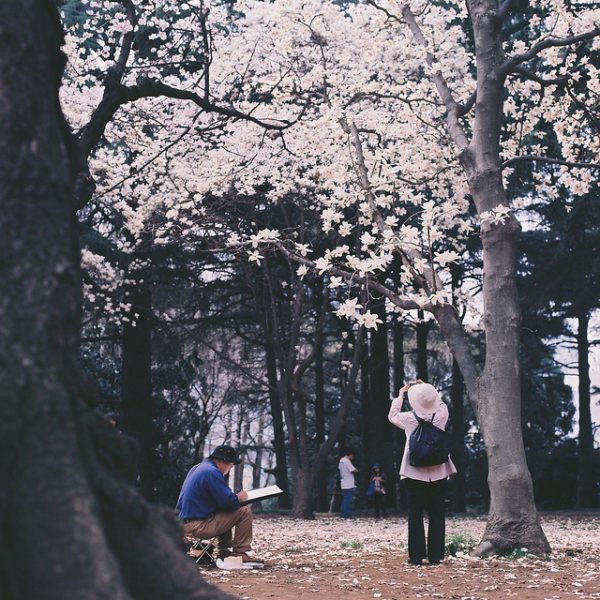
Read more: Cherry blossom best spots in Tokyo
Mitsuike Koen (Yokohama)
Mitsuike Park in Yokohama has been named one of the “100 Best Cherry Blossom Spots” in Japan. It is home to three ponds and over a thousand cherry trees. This park offers free admission. Using your Japan Rail Pass (JR Pass), you can take City Bus Number 104 from either Shin-Yokohama Station or Tsurumi Station.
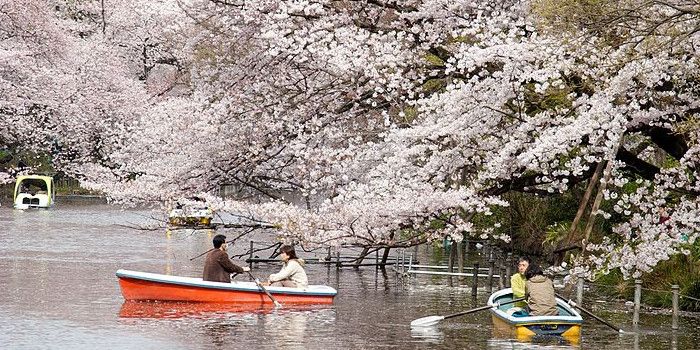
Chureito Pagoda (Fuji Five Lakes)
A favorite spot for photographers throughout the year, Chureito Pagoda offers magnificent views of the famous Mount Fuji. During the month of April, the pagoda rises above the “clouds” of cherry blossoms spread between it and the mountain. Early morning offers the best lighting conditions for serious travel photographers. Chureito Pagoda offers free admission and is an approximately twenty-minute walk from Shimo-Yoshida Station.
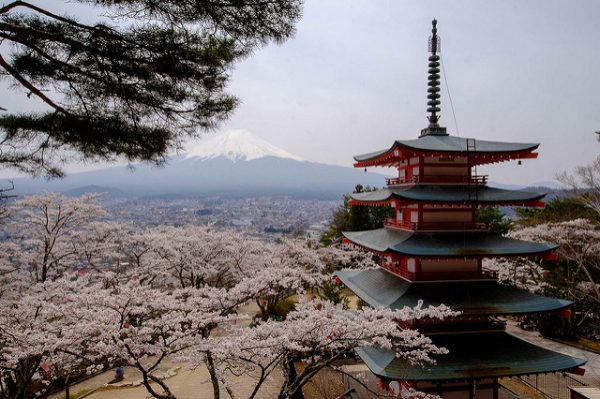
Expo 70 Commemorative Park (Osaka)
This park was the site of the 1970 World Exhibition. It is now home to more than 5,000 cherry trees, one of the highest concentrations in Japan. The trees line paths that meander through the public park. Using your JR Pass, take the Osaka Monorail to Banpaku Kinen Koen Station.
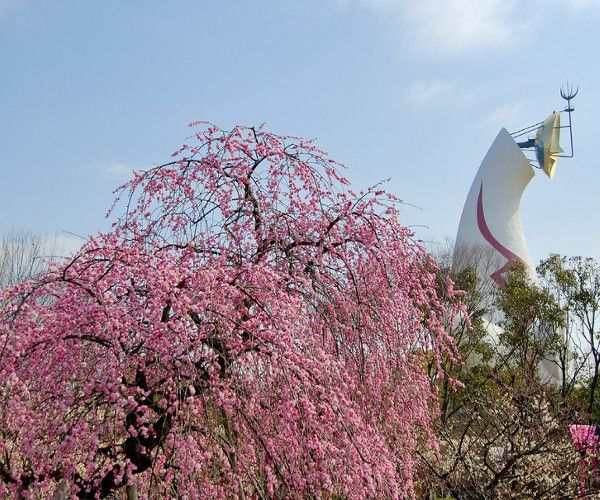
Miharu Takizakura (Fukushima)
Most cherry blossom spots feature hundreds, if not thousands, of individual trees. Miharu Takizakura is unique in that it is home to only a single tree. What, then, makes this location so special? One of the “three greatest cherry trees” in Japan, this may be the most popular individual tree in the country. The takizakura, or “waterfall cherry tree,” is a weeping cherry that is thought to be over one thousand years old. It is located in the hills outside of Miharu Town, near Koriyam City in the Fukushima Prefecture.
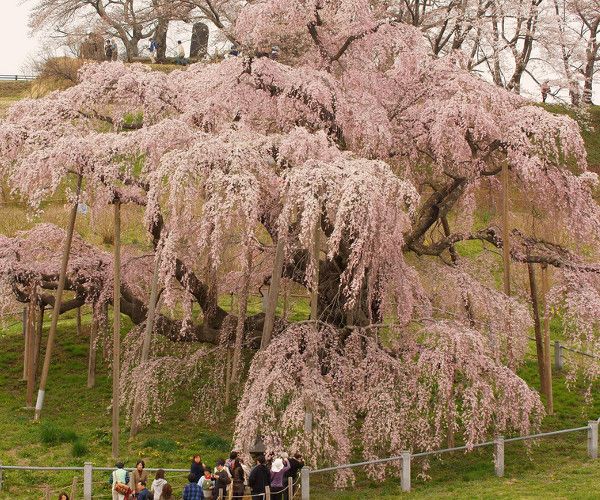
Takato Castle Park (Nagano)
With over 1500 pink Kohigan cherry trees, Takato Castle Park is an iconic and breathtaking place to visit. It is reputedly one of the top three places to see the cherry blossom in Japan and, every April, there is a lively festival with stalls, activities, and evening illuminations. Visitors can also see the historic Takato Castle Ruins.
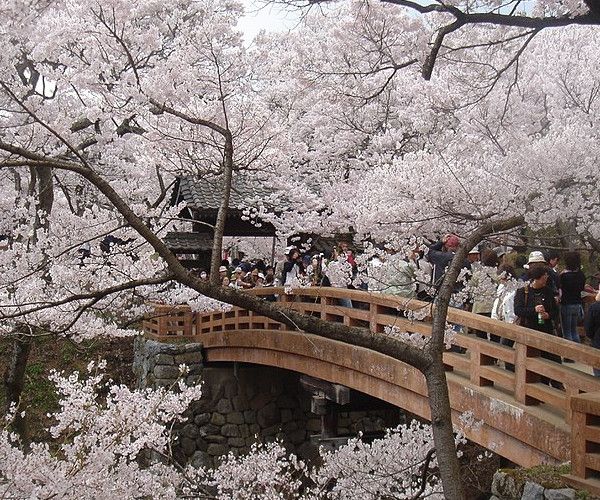
The park can get very busy so visitors should get there and avoid weekends if possible. To get there with your JR Pass, you can catch the JR Azusa limited express train from Shinjuku Station (Tokyo) until Okaya and transfer the JR Iida line (local train) and get off at Inashi Station.
Mount Yoshino (Nara)
The first cherry trees were planted on the slopes of Mount Yoshino over 1300 years ago. But the landmark is much more than simply Japan’s most historical place to view the cherry blossom. It has a unique, magical atmosphere and a picturesque beauty. There are over 30,000 cherry trees of many types and colors. Visitors can also see various idyllic shrines, temples, and parks along the way.
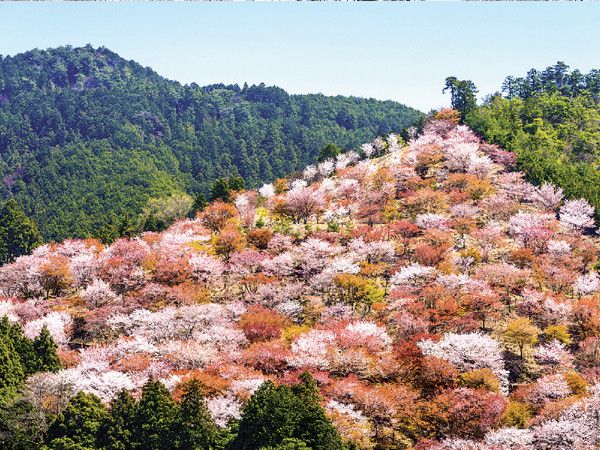
The best time to visit is between late March to early May and during this time there are regular shuttle buses in operation. They run between Yoshino Station and the Naka Senbon area (near Chikurin-in Temple) every 15-30 minutes.
Okayama Korakuen Garden (Okayama)
Korakuen is a truly magnificent landscape garden which is ranked in the top three in the country. The 17th-century park was built by the Shogun to entertain important guests but became government property during the Meiji restoration in the 1880s. The adjoining Okayama Castle (also known as “crow castle”) dates back to the 16th century though many parts have been reconstructed over the years. There are a combined 500 cherry trees between the two sites.
Okayama Korakuen Garden is a 30-minute walk (1.5 kilometers) from Okayama Station. To reach there with your JR Pass, you can catch a tram on the Higashiyama line and get off at Shiroshita which is only a 15-minute walk away.
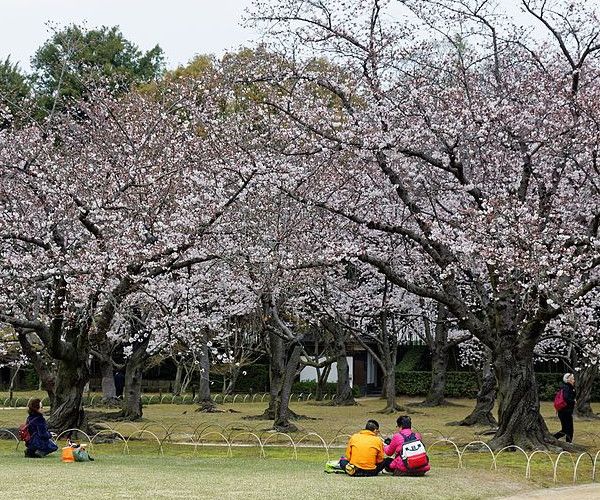
Peace Memorial Park (Hiroshima)
The Hiroshima Peace Memorial Park has become a symbol of peace, hope, and friendship. The Motoyasu River runs through the park and both banks are lined with stunning cherry trees. Each evening during the season, there are special, breathtaking illuminations which draw lively crowds of locals and tourists.
To get to the park from Hiroshima Station with your JR Pass, you can catch a tram which takes 15 minutes (either line 2 or 6) to the Genbaku-Domu Mae stop. You can also reach the park on any of the three lines of the Hiroshima Sightseeing Loop Bus.
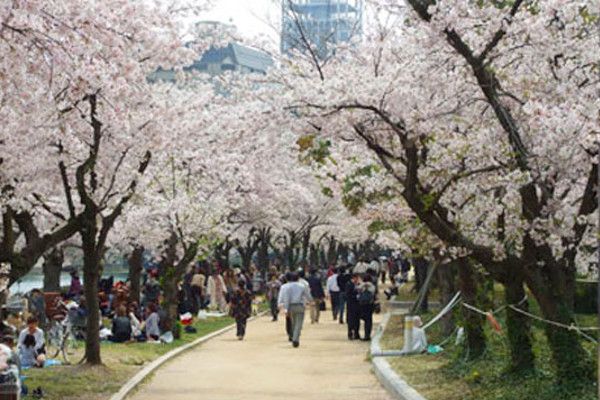
Nishi Park (Fukuoka)
The hillside park has over a thousand cherry trees and is also the site of the Terumo Shrine, the family shrine of the area’s former feudal lords. Aside from the wonderful shades of the cherry trees, you can also see some jaw-dropping views of Hakata Bay, Nokonoshima Island, and Shikanoshima Island. Over 1,300 trees stand on the park’s wonderful slopes.
You can also find some picturesque paths, delicious food stalls, and an observation platform offering panoramic views of Fukuoka. Nishi Park is a 10-15 minute walk north of Ohori Koen Station which you can reach on the Kūkō Line.
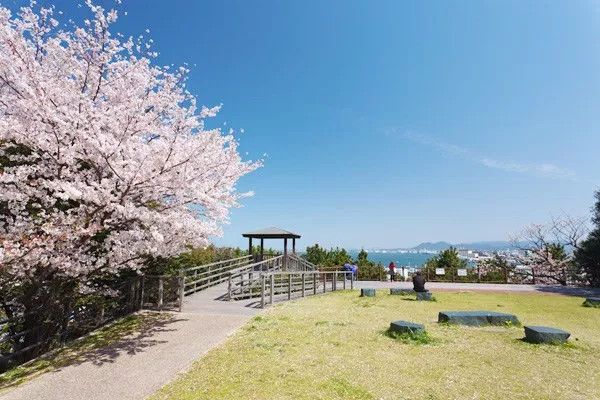
Philosopher’s Path (Kyoto)
The Philosopher’s Path is a quaint stone path which takes you through the north of Kyoto’s Higashiyama district. The walkway follows a canal which is lined by hundreds of cherry trees showcasing vibrant shades of pink, red, and white. The 2-kilometer path was the place where Nishida Kitaro, one of Japan’s most famous philosophers, used to walk and practice meditation.
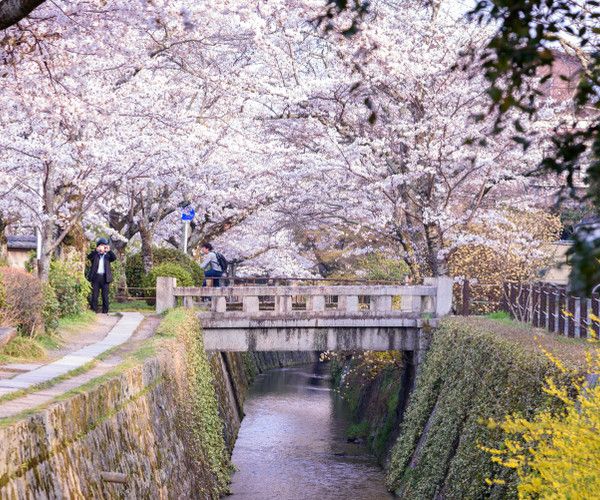
The Philosopher’s Path runs between Ginkakuji and the neighborhood of Nanzenji and takes around 30 minutes to walk. The closest subway station is Keage which is 1km away. If you want to start at the south of the path, get off at Miyanomaecho.
Read more: Cherry blossom best spots in Kyoto
No matter the location you choose, Japan is sure to delight the traveler April traveler with its showy display of delicately hued sakura blossoms. With your Japan Rail Pass in hand, you will be equipped to discover amazing hanami locations and sakura festivals around the country. Select from 7, 14 or 21-day JR Pass, confirm your order and start packing. The most remarkable cherry blossom views are just around the corner.
